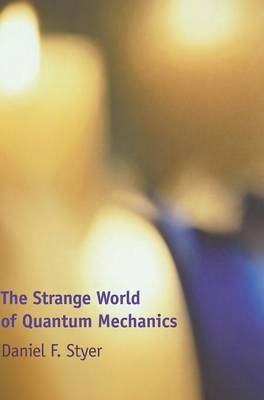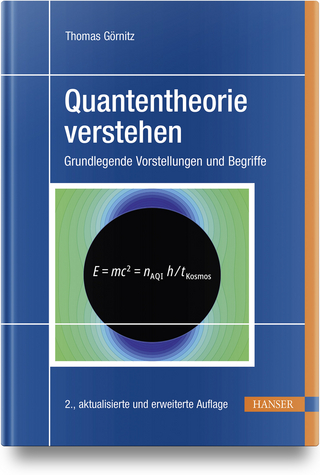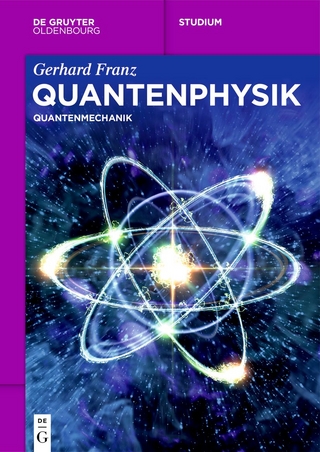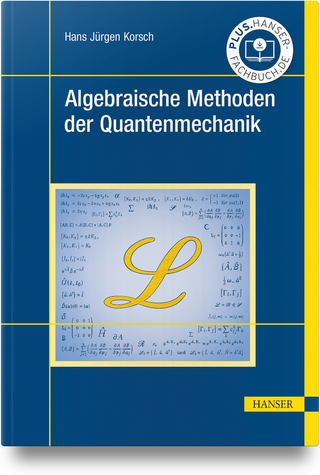
The Strange World of Quantum Mechanics
Seiten
2000
Cambridge University Press (Verlag)
978-0-521-66104-1 (ISBN)
Cambridge University Press (Verlag)
978-0-521-66104-1 (ISBN)
This is an exceptionally accessible, accurate and non-technical introduction to quantum mechanics. Suitable for use as a course text, it will enable students to develop a genuine understanding of the rules governing the domain of the very small. It will also appeal to general readers seeking intellectual adventure.
This is an exceptionally accessible, accurate, and non-technical introduction to quantum mechanics. After briefly summarizing the differences between classical and quantum behaviour, this engaging account considers the Stern-Gerlach experiment and its implications, treats the concepts of probability, and then discusses the Einstein-Podolsky-Rosen paradox and Bell's theorem. Quantal interference and the concept of amplitudes are introduced and the link revealed between probabilities and the interference of amplitudes. Quantal amplitude is employed to describe interference effects. Final chapters explore exciting new developments in quantum computation and cryptography, discover the unexpected behaviour of a quantal bouncing-ball, and tackle the challenge of describing a particle with no position. Thought-provoking problems and suggestions for further reading are included. Suitable for use as a course text, The Strange World of Quantum Mechanics enables students to develop a genuine understanding of the domain of the very small. It will also appeal to general readers seeking intellectual adventure.
This is an exceptionally accessible, accurate, and non-technical introduction to quantum mechanics. After briefly summarizing the differences between classical and quantum behaviour, this engaging account considers the Stern-Gerlach experiment and its implications, treats the concepts of probability, and then discusses the Einstein-Podolsky-Rosen paradox and Bell's theorem. Quantal interference and the concept of amplitudes are introduced and the link revealed between probabilities and the interference of amplitudes. Quantal amplitude is employed to describe interference effects. Final chapters explore exciting new developments in quantum computation and cryptography, discover the unexpected behaviour of a quantal bouncing-ball, and tackle the challenge of describing a particle with no position. Thought-provoking problems and suggestions for further reading are included. Suitable for use as a course text, The Strange World of Quantum Mechanics enables students to develop a genuine understanding of the domain of the very small. It will also appeal to general readers seeking intellectual adventure.
Preface; 1. Introduction; 2. Classical magnetic needles; 3. The Stern–Gerlach experiment; 4. The conundrum of projections: repeated measurements; 5. Probability; 6. The Einstein–Podolsky–Rosen paradox; 7. Variations on a theme by Einstein; 8. Optical interference; 9. Quantal interference; 10. Amplitudes; 11. Working with amplitudes; 12. Two slit inventions; 13. Quantum cryptography; 14. Quantum mechanics of a bouncing ball; 15. The wavefunction; Appendix A: a brief history of quantum mechanics; Appendix B: putting weirdness to work; Appendix C: sources; Appendix D: general questions; Appendix E: bibliography; Appendix F: skeleton answers for selected problems; Index.
| Erscheint lt. Verlag | 24.2.2000 |
|---|---|
| Zusatzinfo | 15 Tables, unspecified |
| Verlagsort | Cambridge |
| Sprache | englisch |
| Maße | 170 x 244 mm |
| Gewicht | 480 g |
| Themenwelt | Naturwissenschaften ► Physik / Astronomie ► Quantenphysik |
| ISBN-10 | 0-521-66104-8 / 0521661048 |
| ISBN-13 | 978-0-521-66104-1 / 9780521661041 |
| Zustand | Neuware |
| Haben Sie eine Frage zum Produkt? |
Mehr entdecken
aus dem Bereich
aus dem Bereich
Grundlegende Vorstellungen und Begriffe
Buch | Hardcover (2024)
Carl Hanser (Verlag)
44,99 €


